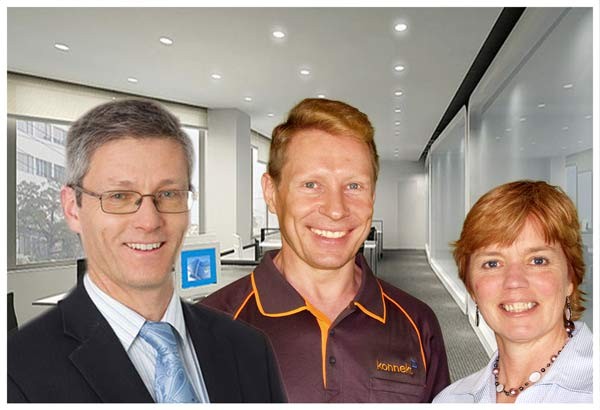The Journey Continues
Busy lives, lonely parents
Unfortunately, life was busy. That hasn’t changed. Even though our parents had carers such as nurses and home help, and even though they went on outings with their church groups, lawn bowls clubs and local council activity groups, they were lonely… and social isolation is dangerous for health. They wanted to see us and spend more time with us. Of course, they’d rarely say it because they didn’t want to be a burden. We’d telephone them often, but it wasn’t the same. They couldn’t see us smile, and so it was much harder to make them smile. It was hard to tell whether they were happy or just trying to sound brave.
Constant worry
Sometimes we couldn’t tell whether they were sick or just had a croaky voice because we interrupted their nap. Sometimes we called when they were in the bathroom or busy in the kitchen, and we worried like crazy when they didn’t answer our calls. Worst of all, one of our Mums sometimes had trouble sleeping and got her day the wrong way around… so she would wake up from a nap at 5pm, eat breakfast, stay awake for hours, and then miss her appointments the next morning. It drove us crazy with worry. There are only so many times you can call neighbours to go bang on the door or peak into the windows. There are only so many times you can drop everything and visit parents in the middle of a weekday.
Video calling… how hard can it be?
Each of us independently hit upon the idea of video calling! Skype, Facetime, Messenger apps… how hard could it be? We set up PC or Mac computers, laptops, and eventually tablets for our Mums and Dads. We installed video calling apps. We got them an Internet service with Wi-Fi. We showed them how to call us. And we installed video apps on our own computers and mobiles. Well, we soon found out how hard it can be! We soon found out the many reasons why most seniors — and even most young adults and kids — don’t use video calling apps.
Hardware and software problems
Even before the cruel shade cloth of dementia slowly invaded our parents’ minds, they had trouble with technology. It was frustrating. If we had to put a cost on the time we spent trying to solve problems, trying to re-teach them, trying to cope with so-called “easy” operating systems and “free” apps, we each could have paid for a dozen plane tickets!
First, there were the hardware and software problems: Computers would crash and catch viruses. Apps would stop working after updates. Icons mysteriously moved or disappeared, or were somehow dragged to trash. Hard discs and memory cards became unreliable and had to be replaced.
Never charged, never nearby, never in range
Laptops and tablets never seemed to be charged — so we couldn’t video-call just when we most needed to — and even when they were charged, they’d be left somewhere in the house that had poor Wi-Fi or couldn’t be heard to ring. It became a chore: We’d try video-calling their laptop or tablet first, then we’d call our Mum or Dad by phone, then they would scramble about the house looking for the tablet and the charger. Eventually we’d call them back, and they’d switch on the charged tablet and start the video-calling app.
Poor quality, poor experience
The quality never seemed to be great… and it was for SO many reasons. Sometimes, the Wi-Fi wasn’t strong enough at the chair where they sat down. Sometimes they’d be out of Internet data (and the Internet would be throttled) because one of the other relatives used it all up during the last visit. Sometimes, they’d get tired holding the tablet, and put it down facing away from their faces. And the screens, cameras, speakers and microphones that are built-in to even the best tablets are tiny…
Messy cables, broken connectors
… but if we plugged in external cameras and speakers, the neat cables would eventually turn into a mess of wires, the plugs would be pulled out, and the connector pins (especially on USB connectors) would become bent from being pushed in the wrong way, or pushed into other sockets.
Hard to see, hard to hear
The screen on 10-inch tablets was just a bit too small to see comfortably from Mum’s “favourite chair”, and the tablet itself would constantly fall over or be knocked from its stand. The volume from the tinny little speakers was too soft during the call, and when we called, it was much too soft to hear it ringing from the other side of the house!
Hand-eye coordination, unexpected pop-ups
As our parents grew older, it became even harder for them to use iPads or tablets. The hand-eye coordination needed to use apps such as Skype or Facetime, to select the right contacts, to cope with the unexpected pop-ups… the myriad of configuration options that could be inadvertently set incorrectly… and accidentally using a pinch or swipe gesture or a long-press instead of a single touch. Frustrating! Oh, and their PC apps were just as troublesome: they would right-click the mouse occasionally, resulting in totally unwanted and unexpected faults, or they would drag/drop instead of click-once, causing the icon to move or disappear into the trash folder. Their old computers seemed to get slower after every update. We often heard ourselves saying, “please turn it off and then on again!” when we were about to give up.
No backup number
Sometimes, it was our fault. For example, sometimes, we would forget to charge our own tablet, or turn our computer off, or forget that we had terminated the video-calling app on our mobile. Sometimes, we’d forget to move to a room with good Wi-Fi, or forget to configure our mobile to connect via Wi-Fi. So when our parents did try to video-call us, well… we weren’t on and there was no backup, and so our parents would learn not to bother with video calling. They would call us by phone instead… and when we asked them to switch to video calling, it was just too much of an effort to hang up and start again.
Eventually, the many bad experiences caused them to dislike the video calling. No amount of encouragement would make them want to try again.
The team forms!
Then one day, we met. We talked. We found that each of us had the same problem! We realised that our Mums and Dads — and probably many other people’s Mums and Dads — really needed a simple and reliable product, with great quality hardware, custom software, professional installation, with all services included, and with great support so that the family didn’t have to be “the IT Guys”.
And there was nothing like it around. Anywhere.
So in 2013, we assembled a team… and that’s when the real Konnekt story started!
International
In 2019 we went global. Videophone is unique, as reliable as your old toaster, and selling across America, the UK and Europe, Asia and Africa. We’ve yet to ship one to Antarctica. I think the penguins there are waiting for our waterproof version?
Captioning phone
In 2020, Konnekt launched the first Captioning Videophone designed for all ages (7 to 107). It’s incredibly easy to use. Konnekt’s Captioning phone enables captioned video calls as well as captioned phone calls. When the other person speaks, you can hear them and also read what they say (known as “voice to text”) – in large, high-contrast text.
Some of our customers (who live with deafness or are hard-of-hearing) at first told us that they don’t want video calls. However once they tried a captioned video call, they loved it! They are able to read lips and facial expressions whenever they talk to a relative or close friend. And they love seeing their distant relatives (especially customers who have grandkids).
Konnekt partners Telstra and the Department of Communications
Later in 2020, Telstra and the Federal Government DITRDCA (Department of Communications) partnered with Konnekt to launch the Konnekt-Telstra Captioning Videophone Program, serving the needs of Australians who are deaf or hard-of-hearing.
Microsoft Artificial Intelligence
Thanks to our collaboration with Microsoft over 2020-2021, Konnekt proudly released improved captioning. Today, captioning is even faster and more accurate, available in over 40 languages, and completely private. No human operator is involved.
COVID Lockdown
Konnekt worked with Care Homes worldwide during 2020-2021 to further refine the Videophone, to make it incredibly easy to set up. The Videophone is delivered ready-to-go, and simply needs to be connected to a power outlet. Even the Wi-Fi can be pre-configured. Konnekt (and our worldwide sales/support partners) personalize the Videophone, and work with Care Home staff (or with a relative/friend) to ensure that Videophone works with exceptional sound and video quality.
One-touch video calling has been a lifeline for many people who would otherwise be quite isolated and lonely.
Care Homes
Telstra generously extended the Captioning Videophone Program in 2023 to include care home residents. Most people who are hard-of-hearing or deaf can access captioned video calls and captioned phone calls for under 17 cents per day (calls included; no other fees).
Remote Alert — Flash, Shake and Ring
Konnekt developed the Konnekt-Bellman integration kit in 2024 and released 4 remote-alert bundles. Whether you’re in the bedroom, lounge or garden, you no longer need to miss calls. Our range of Videophone accessories includes a smoke alarm, bedroom clock, portable pager, flashing lamp, video doorbell, personal amplifier, Bluetooth and wired headphones, TV streamer, baby monitor, desk and wall-mount brackets, ultra-stable side table, wide-angle camera, desktop microphone, mobile phone sensor, and a wireless ability switch.
Captioned Phone Calls on your Existing Smartphone
In 2024, Konnekt responded to requests from the deaf community. For Konnekt customers only: Do you have a 2017* or later iPhone or Android device? We can help you add live captioned mobile-phone calling. Regular phone calls are captioned — even incoming calls direct to your existing mobile number or your Konnekt phone number. Video calls are also captioned.
Currently, we do not charge extra. We re-use our existing subscriptions.

